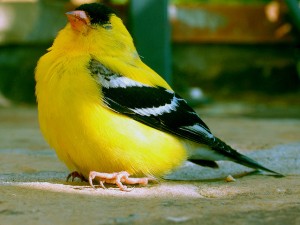Bird friendly building design a priority
In the last three decades, glass building designs have achieved a popularity never before seen. Thanks to improvements in glass and glass coatings, glass has become a standard component of energy efficient building designs. But the use of glass in architecture comes with a price, and groups like the Audubon Society and other nature advocates, the adoption of bird friendly building design could significantly reduce bird mortality.
Bird friendly building design can reduce bird deaths
The American Bird Conservancy (ABC) attributes the death of hundreds of millions of birds in the United States annually to glass building design. According to ABC, collisions with glass are the second largest source of bird mortality, behind predation.
Just as glass is transparent to human beings and other animals, it’s also transparent to birds. Humans have learned to detect the presence of glass through subtle visual clues like reflections, dirt and window frame construction. Because of the way a bird’s eye works, birds cannot interpret these clues correctly and do not realize that a window is not an open space.
For the most part, birds are daytime feeders, but what many people don’t know is that birds migrate at night. While the vast majority of collisions with buildings occur during the day, nighttime artificial lighting interferes with a bird’s ability to navigate at night, and can cause changes in birds’ migratory patterns and habits.
In 2011, the US Green Building Council (USGBC) added bird friendly building design guidelines. The standard requires building designers to quantify the threat level a design poses to birds, taking into account the building’s construction materials and design details.
Bird friendly building design takes into account such elements of glass as its transparency and reflectivity. It also measures the impact of landscaping around the building that may inadvertently draw birds into close proximity with glass. Tall glass buildings pose a particular problem for birds because they reflect open sky and distant landscaping. Since birds cannot detect the difference between actual open sky and a reflection of open sky, tall glass buildings tend to cause a higher proportion of fatal bird collisions.
The principles of bird friendly building design include minimizing the use of glass; placing glass behind screens or lattice work that helps birds identify solid surfaces; and the use of netting, screens, grilles, shutters and exterior shades. Other techniques, such as the use of angled glass. UV-patterned glass, opaque or translucent glass, or silk screened patterns on glass can also help birds detect glass.
How well can these solutions work? A study done on the glass-and-steel Jacob K. Javits Convention Center in New York City in 2009 showed that the building had one of the highest bird mortality rates in the city. Following a 2014 redesign that took bird mortality into account, bird mortality has been reduced there by more than 90%.
Glassprimer™ glass paint is ideal for creating bird friendly opaque and translucent glass. In addition, Glassprimer™ glass surface molecular activator can help create permanent bonds between ink and glass. If you’d like more information about Glassprimer™ products, please visit the rest of our site. If you’d like to purchase Glassprimer™ glass paint, please visit our online store .
Photo Credit: Tim Hickok, via Flickr.com

